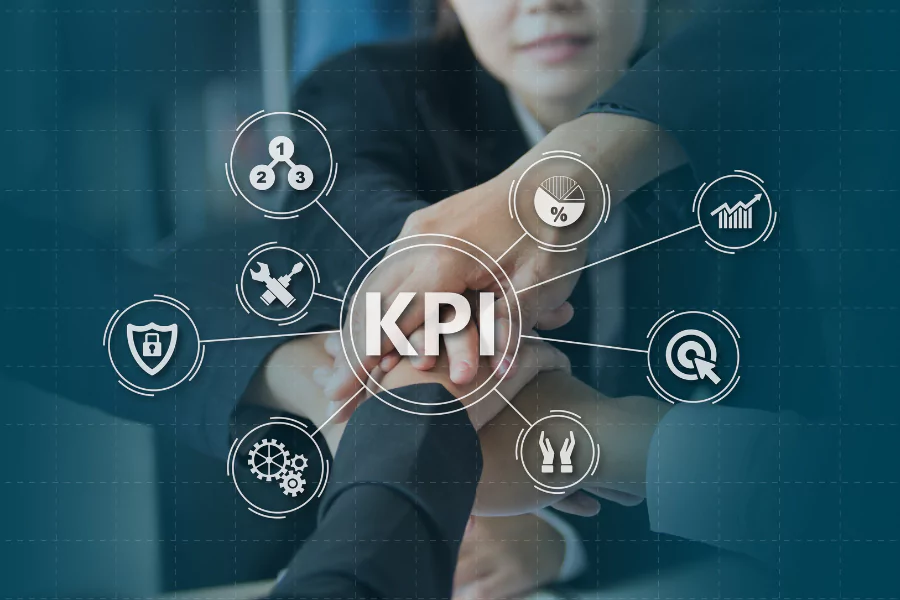How KPIs Measure Content Effectiveness and Optimise Marketing Strategies
Key Performance Indicators (KPIs) are essential metrics used to evaluate the effectiveness of content and optimise marketing strategies. By tracking KPIs, businesses can gain insights into how well their content is performing, identify areas for improvement, and make data-driven decisions to enhance their marketing efforts. Here’s an in-depth exploration of how KPIs measure content effectiveness and optimise marketing strategies:

Understanding KPIs
KPIs are specific, measurable values that indicate the success of an organisation in achieving its objectives. In content marketing, KPIs help gauge the performance of content pieces, campaigns, and overall strategy against set goals. The key is to select KPIs that align with business objectives and provide actionable insights.
Key KPIs for Measuring Content Effectiveness
1. Traffic Metrics:
- Page Views: Indicates how many times a piece of content has been viewed. High page views suggest that the content is attracting visitors.
- Unique Visitors: Measures the number of distinct individuals visiting the content. It helps in understanding the reach and audience size.
2. Engagement Metrics:
- Time on Page: The average time visitors spend on a content piece. Longer times suggest that the content is engaging and retaining audience interest.
- Bounce Rate: The percentage of visitors who leave the site after viewing only one page. A high bounce rate may indicate that the content is not meeting visitor expectations or needs.
- Comments and Social Shares: These metrics indicate how engaging and shareable the content is. High levels of comments and shares suggest that the content resonates with the audience.
3. SEO Metrics:
- Organic Traffic: The number of visitors coming from search engines. High organic traffic indicates that the content is well-optimised for search and is ranking well.
- Keyword Rankings: The positions of targeted keywords in search engine results. Monitoring keyword rankings helps assess the SEO effectiveness of the content.
4. Conversion Metrics:
- Conversion Rate: The percentage of visitors who complete a desired action, such as signing up for a newsletter or making a purchase. This KPI is crucial for measuring the content’s effectiveness in driving business goals.
- Lead Generation: The number of leads generated through content. This includes metrics like form submissions, downloads, and sign-ups.
5. User Behaviour Metrics:
- Click-Through Rate (CTR): The percentage of users who click on a link or call-to-action in the content. A high CTR indicates that the content effectively prompts users to take the next step.
- Heatmaps: Visual representations of where users click and how they navigate through the content. Heatmaps help identify which parts of the content are most engaging and which areas need improvement.
Using KPIs to Optimise Marketing Strategies
1. Identifying High-Performing Content: By analysing KPIs, businesses can identify which content pieces are performing well. For example, content with high page views, low bounce rates, and high conversion rates can be analysed to understand what makes it successful. These insights can be applied to future content creation.
2. Improving Underperforming Content: KPIs can also highlight content that is not performing as expected. For instance, a high bounce rate might indicate that the content is not relevant or engaging. Businesses can use this information to revise and improve content, such as by enhancing headlines, improving readability, or adding more compelling visuals.
3. Refining SEO Strategies: SEO metrics like organic traffic and keyword rankings provide insights into how well content is optimised for search engines. If certain keywords are not ranking well, businesses can adjust their SEO strategies by incorporating more relevant keywords, improving meta tags, and increasing backlinks.
4. Enhancing User Experience: User behaviour metrics such as CTR and heatmaps help understand how users interact with content. By analysing these behaviours, businesses can make adjustments to improve the user experience, such as optimising the layout, improving navigation, and making calls-to-action more prominent.
5. Adjusting Content Strategy: By regularly monitoring and analysing KPIs, businesses can identify trends and shifts in audience behaviour and preferences. This allows them to adjust their content strategy to align with current trends, audience interests, and market demands.
KPIs are indispensable tools for measuring content effectiveness and optimising marketing strategies. By tracking and analysing relevant KPIs, businesses can gain valuable insights into their content performance, identify areas for improvement, and make data-driven decisions to enhance their marketing efforts. Ultimately, leveraging KPIs helps businesses create more engaging, effective, and impactful content that drives their goals.
Active Events
3 Essential Projects to Elevate Your 5c of Content Marketing Portfolio
Date: Feburary 25, 2025 | 7:00 PM(IST)
7:00 PM(IST) - 8:10 PM(IST)
2432 people have registered
Your Data Science Career Game-Changing in 2024: Explore Trends and Opportunities
Date: Feburary 28, 2025 | 7:00 PM (IST)
7:00 PM (IST) - 8:10 PM (IST)
2811 people have registered
Bootcamps
Digital Marketing Bootcamp
- Duration:4 Months
- Start Date:Feb 9, 2025
Data Science Bootcamp
- Duration:4 Months
- Start Date:Feb 9, 2025
